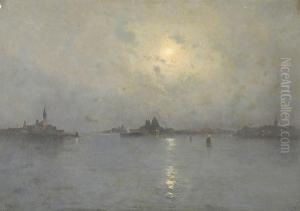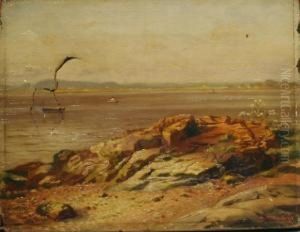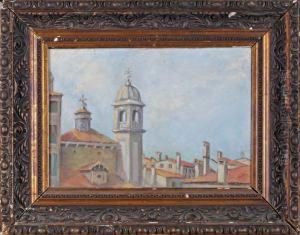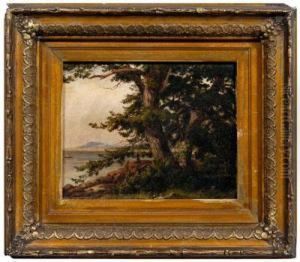August Will Paintings
August Will was an American artist, born in 1834 in Germany. He immigrated to the United States, where he became part of the art scene, primarily known for his work as a lithographer and painter. Will's exact place of birth in Germany is not widely documented, and much of what is known about his early life comes from records of his activity in the United States.
In the United States, August Will settled in New York City, which, during the 19th century, was a burgeoning hub for artists, writers, and intellectuals. He worked as a lithographer, which was a popular form of printing art and illustrations at the time. Lithography involves drawing on a stone (or a metal plate in modern times) with a greasy substance, then chemically treating the stone to retain ink only where the original drawing lines were made, and finally pressing paper against the stone to transfer the ink. This method allowed for high-quality illustrations to be reproduced and shared widely.
In addition to his lithographic work, Will was also an accomplished painter. He is best known for his landscapes and urban scenes, capturing the bustling life of New York City and the serene countryside surrounding it. His works often reflect the changing face of America during the 19th century, which was marked by rapid urbanization and industrialization.
Although August Will was not as widely celebrated as some of his contemporaries, his work provides valuable insights into the American life of his time. The details in his urban scenes are of particular historical interest, as they document the architecture and fashion of the era. His landscapes, on the other hand, provide a contrast to the urban experience, showcasing the natural beauty of the American countryside, which was an important subject for many artists of the period.
August Will's contributions to American art were part of the larger movement of artists who sought to capture the spirit of their rapidly changing country. He continued his work until his death in 1910. Today, his prints and paintings can be found in various collections and are studied for their historical and artistic value. While he may not be a household name, Will's art is a testament to the diverse and dynamic world of 19th-century American art, and his legacy continues to be appreciated by art historians and enthusiasts alike.





